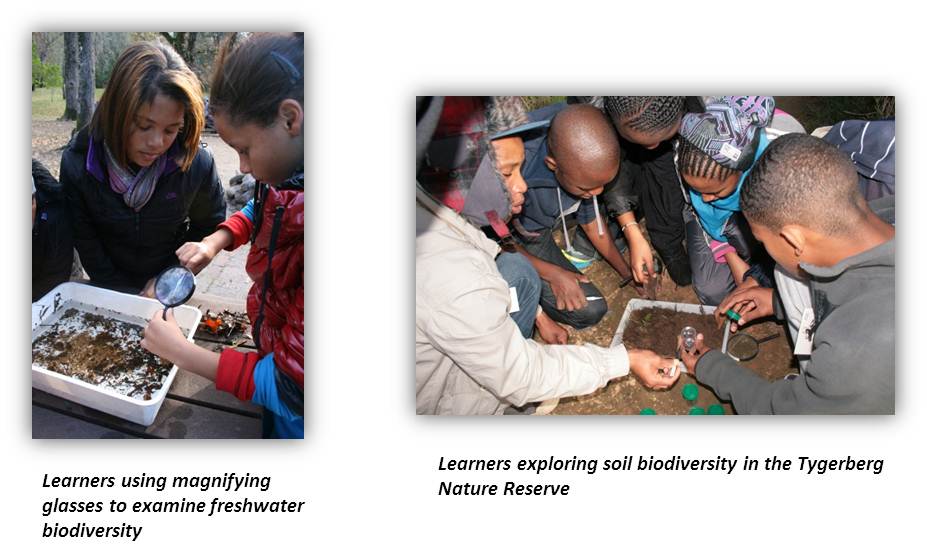As part of the Iimbovane Outreach Project’s goals to improve the understanding of biodiversity among high school learners, the project hosted a five-day learner workshop for selected learners from their partnership schools.
The Winter Week, which took place from 24th – 29th June 2012, was attended by 21 Grade 10 learners from seven high schools around the Western Cape, with some learners traveling from as far as Vredendal. Schools represented at the event included Lavender Hill SS (Retreat), Atlantis SS (Atlantis), Vredendal SS (Vredendal), Breërivier SS (Worcester), Malibu SS (Blue Downs), Sarepta SS (Kuilsrivier), Manzomthombo SS (Blue Downs) and Luhlaza (Khayelitsha).
This five-day event exposed learners to the importance of careers in biodiversity science, sharpened their scientific skills and broadened their experience of biodiversity observation and monitoring. With a programme filled with fieldwork excursions, practical laboratory sessions and data handling lectures, there was not a minute to spare.
The programme kicked off with fieldwork in the Tygerberg Nature Reserve where the learners were introduced to methods and apparatus for sampling soil biota. The investigative skills of the learners were then put to the test when learners were expected to design their own biodiversity surveys with the guidance of the Iimbovane project team members. Pitfalls were planted, rocks were overturned and vegetation was inspected, leaving the learners with containers filled with unknown invertebrates to identify. The next step was sorting and identifying the samples collected in the field using microscopes and basic scientific key. This rare opportunity excited the learners a lot and at the end of the day the team had their hands full getting the learners to give up the microscopes.
Learners were furthermore introduced to the rich diversity of the fynbos biome during a visit to the Harold Porter Botanical Gardens in Betty’s Bay. Examining Freshwater biodiversity was also on the programme with a session presented by Jeanne Gouws, Freshwater Scientist at Cape Nature. The learners were in for a cold and wet surprise when Ms Gouws showed the learners how to conduct a river assessment using freshwater invertebrates. Each participant received a set of worksheets to collect information about the ecosystem and other environmental factors as well as a worksheet to identify the organisms they found during each of the excursions.
But no research is complete without data analysis and the interpretation of the data. To show the learners how biologists use simple indexes to determine species diversity and richness, the learners were treated to a work session in the computer laboratory. Learners used basic word processing and data analysis software to make sense of their data and each group presented their findings to the rest of the class (using PowerPoint).

A further aim of the workshop was to introduce learners to a “university environment” to motivate them to pursue tertiary studies after school. Learners were taken on a campus tour to show them the variety of faculties, introducing them to different study areas that the university offers. Learners were also treated with a visit to the underground library.
Learners not only enjoyed the excursions and fieldwork, but came away with a greater understanding of the value and importance of biodiversity and its economic value in terms of tourism, key threats to the different biomes in South Africa and the wide range of career opportunities available in this field.

The Iimbovane Outreach Project is managed by the DST-NRF Centre for Invasion Biology (C·I·B) and made possible through funding from AfriSam and the Rand Merchant Bank Fund.